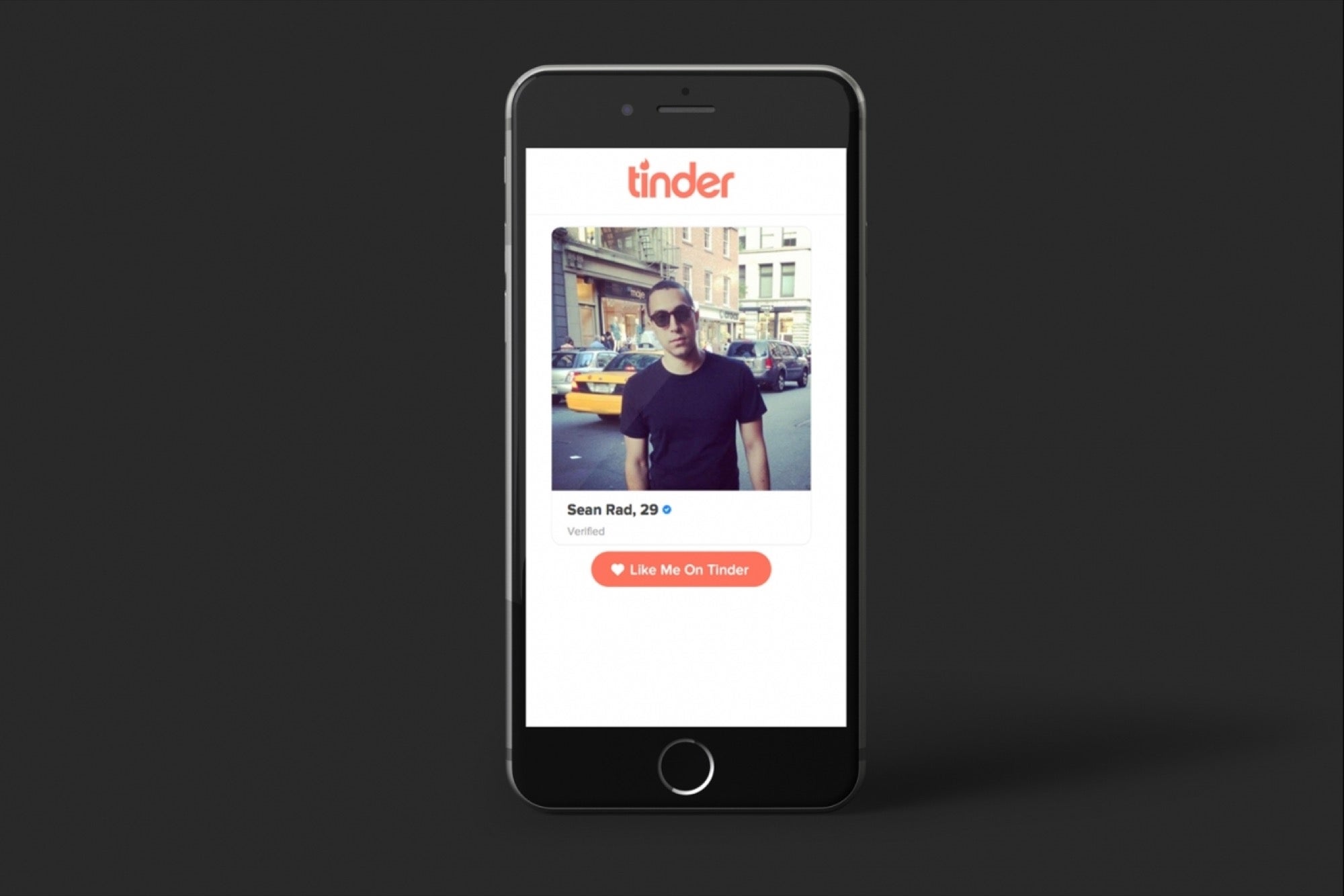1 Billion Matches Later, Tinder Can Trace Its To-the-Moon Growth to Signing Up Sorority Girls Sex still sells, but Tinder is more than just a one-night stand. I take a look under the hood of the phenomenon.
By Andrew Medal Edited by Dan Bova
Opinions expressed by Entrepreneur contributors are their own.

Since Tinder launched in September 2012, the app has seen wild and explosive growth. Within two years, it had 1 billion matches and 800 million swipes per day. That's crazy to think about. The U.S.'s population is roughly 300 million. That would mean if every single person in the country had the app, every single person would have to swipe almost three times every single day. Nuts.
According to News.com.au, Tinder as of that report saw 10 million matches per day, at least 300 marriage proposals to date and is used in 24 languages. So, how did Tinder get its start?
Inception: The creation myth
Oddly enough, the Tinder startup story is not exactly as it appears. As mentioned by TechCrunch, the story goes something like this:
"The app was founded by Sean Rad and Justin Mateen, a pair of 27-year-old entrepreneurs who 'seeded' it in the University of Southern California with just 300 people. By the end of the week it had 1,000 users and a new craze was born."
Related: Investors 'Swipe Right' on Tinder Parent's Market Debut
The app is already majority owned by a huge corporation (boo!). It was developed at a startup incubator owned by media giant InterActiveCorp (IAC). The corporate giant owns more than 150 of the world's largest online brands, such as Expedia, Vimeo, UrbanSpoon and The Daily Beast.
IAC is very familiar with the dating world, owning other sites including Match.com, OKCupid, Chemistry.com, Ourtime.com and Chinese matchmaking site Zhenai, to name a few. Most people think of Tinder as a "startup" created by some dudes in a dorm, and the confusion appears to be intentional, at least according to Sam Yagan, CEO of IAC's Match.com and OkCupid.
As Yagan explained in June 2013 as reported by Fortune:
"We keep it sort of on the DL because it's much sexier for it to be a totally fresh startup that has nothing to do with the market leader. But we're constantly trying to build new startup-y stuff at Match, and this is a product that we started working on late last year with the team in L.A., and it popped."
Additionally, there's all sorts of controversy that surrounds the team such as the sexual harassment suit between co-founders Justin Mateen and Whitney Wolfe. Personally, I don't push my beliefs on others, so if you want to read about all of that just look elsewhere.
Though the creation story is confusing, and somewhat misleading, the numbers are not (provided by Business of Apps):
- Tinder is available in more than 30 languages worldwide (Source: News.com)
- Majority-owned by InterActiveCorp, it generates 1 billion matches, 800 million swipes and 10 million matches a day
- Subscriber estimates vary. Credit Suisse says it is at 100,000 users and Morgan Stanley at 297,000 (Source: Techcrunch)
- 24 percent of Tinder users are paying for online dating services (Source: Global Web Index)
- With the launch of Tinder Plus, Tinder jumped from number 969 to 26 in the iOS download charts in March 2015 (Source: AppAnnie)
- JMP Securities estimates Tinder to be worth $1.6 billion, with $121 million coming from subscriptions alone (Source: BusinessInsider)
Needless to say, it doesn't hurt for a "startup" to have a big corporate partner. It still begs the question: How is it that Tinder has grown so rapidly in such a short amount of time?
Launch: Overcoming the chicken and egg two-sided marketplace problem
First off, because Tinder is a mobile dating app that matches people with partners (two sides needed), we're talking about the two-sided marketplace problem. It's a very common problem for marketplace tech companies, with the perfect examples being AirBnB and Uber. The value of the marketplace is directly correlated to the number of participants. Both sides need participants to find value. So, the question is, how do you get started?
A lot of companies start by driving growth of one side of the marketplace. In Tinder's case, the founders decided to focus on sorority girls as early adopters, as explained below by Joe Munoz, one of the team's co-founders:
"We sent [Wolfe] all over the country … Her pitch was pretty genius. She would go to chapters of her sorority, do her presentation and have all the girls at the meetings install the app. Then she'd go to the corresponding brother fraternity -- they'd open the app and see all these cute girls they knew."
Related: It's Time for Sean Rad to Leave Tinder. For Good.
The strategy appeared to be a hit. The more women that joined the platform, the more eager their male counterparts were to download the app.
In the same interview, Munoz explained that when Wolfe returned from her campus trip, Tinder had grown to almost 15,000 users. He believed that was the avalanche needed to spur growth.
Launch growth: Driving network effects on campus
Tinder's strategy to sign up sorority girls on campus helped to seed the marketplace. However, Tinder still had to overcome other challenges.
The network effect is a major problem for any company that has a product or service that needs users. When there is a network effect in play, the direct value of a product or service is correlated and dependent on the number of others using that product or service. The classic example is the telephone. If you're the first person with a telephone, the phone itself is not very useful. However, as more people you know adopt the phone, the phone becomes more valuable because you can reach more people. This is the network effect in action.
You see the network effect play out in social networks (Facebook, Instagram and Snapchat) and other marketplace-type businesses such as Uber, Etsy and AirBnB. The user base was especially critical for Tinder, seeing as how a shortage for either gender could prevent the app from providing necessary value.
Additionally, contrary to the telephone example above, Tinder was also dependent on location. Users of the app would be expecting to search for dates in their locales. Someone living in Los Angeles, searching for a date, is hoping to find a match in the same city.
The college campus played a dual role in Tinder's early growth. For one, it helped supply and seed the marketplace that helped overcome the two-sided marketplace problem. In addition, the campus provided a dense network of local users.
As substantiated by Morgan Brown and Everette Taylor on Growth Hackers, "Once Tinder had gained a sufficient user base thanks to word of mouth, adoption began to snowball thanks to the network effect -- the more users Tinder got, the more valuable it became, and so even more people joined."
Continued growth: Tactics worthy of mention
The above tactics helped Tinder to overcome important fundamental business model obstacles, and provided early traction that ultimately landed them the coveted product market fit. As with any startup, when witnessing explosive user growth there is typically a perfect storm of other variables that help contribute. Here a few worthy of mention, but by no means the be all-end factors:
Third-party integration: Verifying your identity is as easy as connecting Facebook or Instagram. This effortless onboarding process had played a role in Tinder's continued growth.
User experience: Swipe right for yes, swipe left for no. It doesn't get much easier. I'm a web designer, and UX is not the missing component to virality and explosive growth. However, I do believe it contributes to continued growth and engagement (which also contributes to growth). So, unlike others who have claimed that the Tinder UX contributed directly to its growth, I believe it contributed indirectly.
"Celebrity" buy-in: Tinder was able to rope in different public figures and quoted claiming their use of Tinder. Olympic athletes and Miss America have all been quoted as using the app, which can obviously create buzz and drive user growth.
In Ryan Holiday's book, Growth Hacker Marketing, he explains that the most productive marketing tactic is to actually build a product people want. Sounds pretty logical, right? Unfortunately, it's not always the case. Too many founders try to find the right marketing gimmick that will help them achieve explosive growth, when the reality is that they just haven't built anything anybody really wants.
At the end of the day, Tinder solved a problem, and its explosive growth is simply a result of that demand. Plus, you know, sex still sells.
Related: You Must Blend These 5 Ingredients Perfectly for Startup Success









